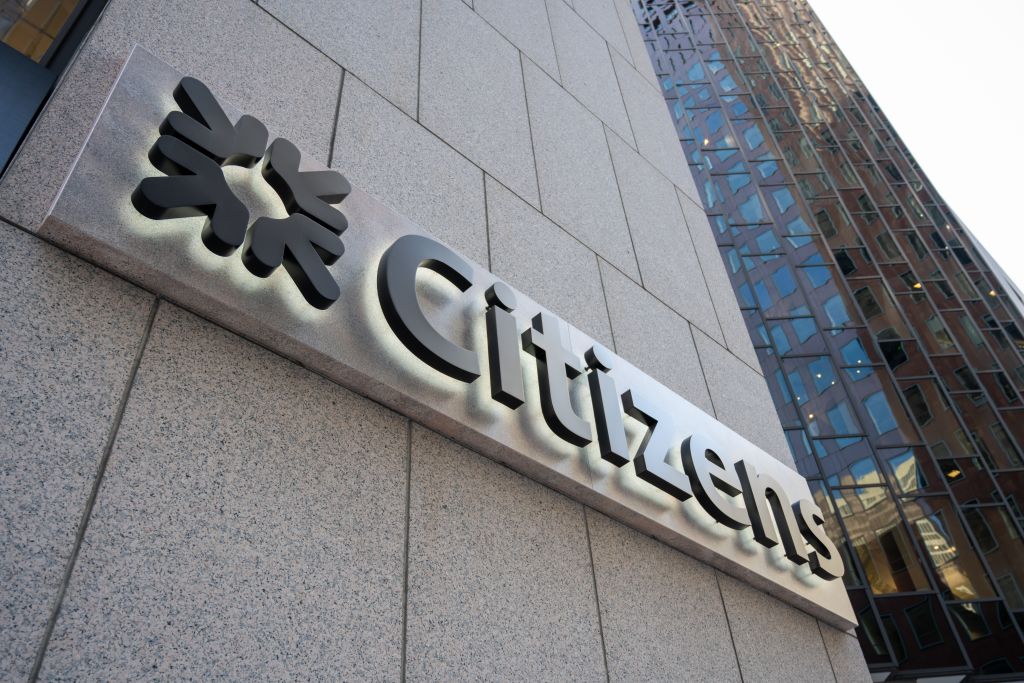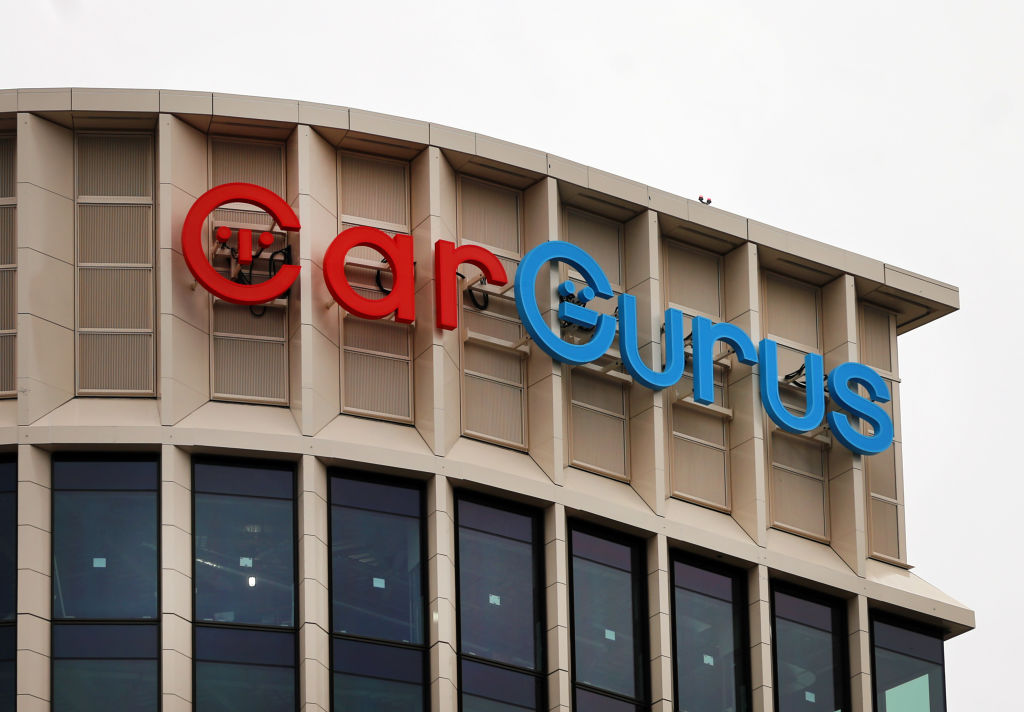5 Undervalued Stocks to Buy Now
There are plenty of high-quality undervalued stocks to buy right now, you just need to know where to look. Here, we highlight five of our top picks.


The major indices have rebounded from 2025's near-bear market and started setting a series of new highs. That's fantastic news for most investors' current holdings, but it's a lousy break for anyone itching to add a few new positions on the cheap.
Equities' recent run has sent the S&P 500's forward price-to-earnings (P/E) ratio to just above 22 – levels last seen in the COVID bear rebound, and before that, the dot-com bubble burst. So if you're looking for blue-chip values, you're generally out of luck.
Mid-caps and small-cap stocks, however, remain both nominally cheap, and historically undervalued compared to their large-cap brethren. So if you're shopping for big bargains, you'll want to think small … or at least smaller.
From just $107.88 $24.99 for Kiplinger Personal Finance
Become a smarter, better informed investor. Subscribe from just $107.88 $24.99, plus get up to 4 Special Issues

Sign up for Kiplinger’s Free Newsletters
Profit and prosper with the best of expert advice on investing, taxes, retirement, personal finance and more - straight to your e-mail.
Profit and prosper with the best of expert advice - straight to your e-mail.
Let's take a look at five undervalued stocks to buy now. We tend to think variety isn't just the spice of life, but a good way to keep your portfolio balanced, so each stock has been plucked from a different sector. As a result, this group represents a blend of growth, value and income.
Data is as of July 29.
Our methodology for finding the best undervalued stocks
When exploring the market's thousands of stocks, it helps to start with a screen to narrow down a wide universe into a digestible group of potential picks. Among the traits we sought out for today's bundle of value plays?
A consensus Buy rating: The stock must have an average broker recommendation of 2.5 or less within S&P Global Market Intelligence's ratings scale.
S&P Global Market Intelligence converts analysts' ratings into a numerical scale. Anything with a score of 2.5 or less is considered a Buy. We only chose stocks with a rating of 2.0 or less, ensuring that we're only dealing with higher-conviction consensus Buys.
Forward P/E below the sector average: For what it's worth, every stock on this list is cheaper than the S&P 500 by forward P/E. But we also wanted to ensure that these stocks were considered inexpensive relative to similar companies, too.
PEG below 1.0: Price/earnings-to-growth (PEG) is another valuation metric that doesn't just evaluate the stock's price in a bubble, but in relation to its earnings-growth prospects.
In a nutshell: A PEG of 1.0 indicates a stock is fairly valued, above 1.0 indicates it's overvalued and below 1.0 indicates it's undervalued.
We like PEG because it allows you to value a stock without needing to compare it to anything else … but if you choose to compare it to anything else, it's a fairer standard given that, unlike any other valuation metric, it actually accounts for growth.
The S&P 500 has a PEG of 1.47 right now, which is both nominally overvalued and a little high compared to its long-term range. So these stocks are not only cheap by virtue of how PEG is calculated, but they're also relatively cheap compared to the market.
One-year positive price growth: There's absolutely nothing wrong with picking up a battered stock and dusting it off – you can find plenty of value in equities that have lost ground.
But we wanted to focus on stocks that remain undervalued despite at least treading water (if not making significant gains) over the past 52 weeks.
Importantly: Because these companies sport basement-dwelling valuations doesn't mean they're all traditional value stocks.
A few of these picks are excellent examples of "GARP" (growth at a reasonable price), so investors of various stripes should find something that appeals to their particular style.
Primo Brands

- Sector: Consumer staples
- Market value: $10.5 billion
- Forward P/E: 15.4
- PEG: 0.74
- Dividend yield: 1.4%
"Moisture is the essence of wetness, and wetness is the essence of beauty." Well, if Zoolander is right, Primo Brands (PRMB) is downright beautiful.
Primo Brands is one of the most acutely focused consumer staples stocks you'll ever come across. It deals in water … that's it.
It boasts a couple dozen brands, including Poland Spring, Deer Park, Pure Life, Saratoga, Mountain Valley, Arrowhead and Ice Mountain.
Admittedly, that covers a lot of different types of water, including spring, sparkling, mineral, purified, flavored and enhanced.
And it's more than just bottled water you'd pick up at the grocery store – the company also boasts tens of thousands of self-service refill and water exchange stations for multi-gallon bottles; direct delivery to homes, offices and businesses; and it even sells water dispensers.
If this stock doesn't sound familiar, it's because it hasn't traded on public exchanges for very long – at least not in its current state.
Primo Brands was formed by the merger of Primo Water and BlueTriton Brands and started trading as PRMB on November 11, 2024.
Primo Brands delivered moderate albeit inconsistent stock-price growth for the decade or so prior to the merger … and that has so far continued under its new ticker.
But Wall Street's analyst community – which has 12 Buys against no Holds or Sells – is extremely bullish on its future.
"Primo is structured to capitalize on secular demand for clean beverages (water) as a better-for-you alternative to sugary (or otherwise processed) beverages as well as tap water (which is increasingly saddled with quality issues)," say William Blair analysts, who rate the stock at Outperform (equivalent of Buy).
The group adds that "Primo is unique both in its singular focus on healthy hydration in North America and in its portfolio range, which allows consumers access to clean water in the manners (channels, formats, prices) most preferred for each consumption occasion."
PRMB is also a rare bird in that it's the only name in this sector to survive our screen for undervalued stocks, coming in cheaper than the broader group of staples' 21.7 forward P/E.
Meanwhile, its growth expectations for 2025 are explosive, with the pros calling for a 95% advance on the bottom line. Its 2026 estimates (+20%) are probably a bit more in line with what to expect longer term.
That helps offset what is a below-average dividend in the consumer staples space.
Opera Limited

- Sector: Information technology
- Market value: $1.5 billion
- Forward P/E: 11.3
- PEG: 0.71
- Dividend yield: 4.7%
Norway-based Opera Limited (OPRA), a subsidiary of Hong Kong Kunlun Tech, is the maker of the Opera web browser.
The browser, which also includes the company's "Aria" artificial intelligence, boasts nearly 300 million active users across more than 180 countries worldwide.
In addition to its browser, it also has e-commerce and online advertising, it operates an AI-powered news discovery and aggregation service, and it owns gaming development platform GameMaker Studio.
Opera went public in 2018, but the tech stock didn't really show any signs of life until late 2022 – since then, shares have more than quadrupled.
That more or less aligns with a sea change in its operational growth trajectory that has seen revenue double since 2020, even though profits have been wildly variable since then.
Despite its stock-market success, shares remain a relative bargain. OPRA's forward P/E is almost half that of the technology sector; its PEG signals that it's undervalued, too.
And while the company only started paying semiannual dividends a couple of years ago, its 40-cents-per-share dole translates into a superior 4%-plus yield at current prices.
The analyst community doesn't think Opera's stock is just cheap – it thinks it's one of the best undervalued stocks to buy based on its growth prospects.
OPRA has an admittedly small crowd of just seven covering analysts, but every one of them sees the stock as a Buy. And on average, they believe the company will generate 20% long-term annual earnings growth.
"We view [management's] focus on driving growth in its Western user base positively, as it drives higher monetization and revenue and positions the business for sustained share gains in the ad market," says B. Riley Securities analyst Naved Khan, who rates the stock at Buy.
The analyst adds that Opera's "strong underpinnings" and strength in e-commerce suggest its 2025 outlook is "appropriately conservative" and there is "potential for upside if the macro doesn't worsen."
Citizens Financial Group

- Sector: Financials
- Market value: $21.3 billion
- Forward P/E: 9.9
- PEG: 0.47
- Dividend yield: 3.4%
On the other side of the valuation spectrum are financial stocks, which at a forward P/E of 16.7 are among the market's cheapest sectors.
But within that already inexpensive group, large regional bank Citizens Financial Group (CFG) is a truly undervalued stock, trading at a mere 10 times earnings estimates.
Citizens Financial Group is the parent of Citizens Bank, which provides a variety of consumer, business, real estate and private banking services.
The bank's 1,000 or so branches and more than 3,100 ATMs serve customers across 14 (predominantly East Coast) states and the District of Columbia, and at last check, it boasted $220 billion in assets.
CFG shares haven't given investors much to cheer about longer term, trailing both Citizen's fellow banks and the broader market.
But things are looking up – the stock has roughly tracked the financial sector over the past year, delivering a nearly 19% total return (price plus dividends) and outperforming the S&P 500 in that time. You can thank a business picture that has been looking up of late.
"CFG has among the strongest ROTCE [return on tangible common equity] improvement stories among large regional banks, supported by net interest income/net interest margin improvement, private bank buildout, balance sheet optimization efforts, and a capital markets recovery," says Keefe, Bruyette & Woods analyst Christopher McGratty, who rates the stock at Outperform.
While the analyst admits that "perceived credit risk" creates an "overhang on the multiple," the "outlook visibility is improving." He adds that "CFG has among the most attractive risk/reward setups in the group."
McGratty is one of a gaggle of optimistic analysts – currently, 14 pros say CFG stock is a Buy. That compares to just six analysts on the sidelines at Hold, and no Sells to be found.
That's in large part because of excitement over the company's long-term earnings-growth prospects, which the Street sees coming in at 25% annually.
CarGurus

- Sector: Communication services
- Market value: $3.3 billion
- Forward P/E: 13.4
- PEG: 0.68
- Dividend yield: N/A
Communication services stocks are the youngest of the market's 11 sectors, created in 2018 as a hodgepodge of technology, media, telecommunications and other companies.
It's a diverse sector with a wide range of valuations, which helps to explain why a sector with the likes of Netflix (NFLX) and Meta Platforms (META) has a below-market P/E of just below 20.
Online vehicle market place CarGurus (CARG) is even cheaper than that. But the reason why isn't grand. The company hasn't generated nearly the same level and consistency of top- and bottom-line growth as the aforementioned sector giants.
That's clearly reflected in the stock, which rocketed higher on the first day following its 2018 initial public offering (IPO), but has only appreciated by about 20% ever since. (The S&P 500 has returned 180% since then.)
For those of you who don't do your car shopping online, CarGurus is an online automotive platform that allows consumers to buy and sell vehicles, though it also provides an auction platform, reviews and editorial content.
Additionally, it enables car dealers to make transactions with other dealers through CarOffer, which it fully acquired in 2023.
And it's that latter platform that could help CarGurus change its course for the better.
"We believe CARG is leveraging its proprietary valuation technology, clean UX, and digital retail products to create sustainable traffic advantages and higher intent shoppers, which, in our view, positions the company as a leading marketing platform for U.S. car dealers," says Oppenheimer analyst Jed Kelly, who rates shares at Outperform.
The analyst believes the company's push into wholesaling is "potentially transformational," and could create "a more transactional platform that will eventually deliver upside to [long-term] estimates and generate multiple expansion."
CARG is the least-loved stock of this group, but with nine Buys and five Holds, it still has a solid consensus Buy rating, as well as expectations of 22% annual profit growth over the next three to five years.
And again, a forward P/E of 15 is significantly undervalued compared to the communication services sector, while a PEG of 0.69 is cheap period.
Chart Industries

- Sector: Industrials
- Market value: $9.1 billion
- Forward P/E: 13.6
- PEG: 0.68
- Dividend yield: N/A
Chart Industries (GTLS) is an industrial firm that specializes in equipment for the liquid gas supply chain, as well as air and gas handling equipment.
The company's offerings include gas cryogenic solutions for industrial gases; cryogenic trailers, bulk storage tanks and more for liquefied natural gas (LNG); natural gas processing solutions; air-cooled heat exchangers and axial cooling fans for HVACs; and much, much more.
And if all goes right, in the fourth quarter, "much more" will include the various businesses of Flowserve (FLS), which specializes in flow control products, including pumps, seals, valves, energy recovery devices and more.
In early June, the companies announced an all-stock merger of equals, with Chart shareholders receiving 3.165 shares of FLS for each share held.
It's understandable for some value investors to avoid undervalued stocks when they're in the middle of a transformational M&A move. After all, the valuation metrics could look considerably different once the entities are brought together.
Regardless, given Wall Street's optimistic views of both stocks prior to the merger, GTLS still might be worth a look.
As of right now, Chart trades well below the industrial sector's 24 forward P/E and at an attractive 0.10 PEG.
That looks even better when you consider GTLS is expected to grow its bottom line by 41% this year, then another 23% in 2026.
Flowserve's value proposition isn't as pronounced; a forward P/E of about 18 is nice, but a PEG of 1.25 is lofty. Meanwhile, earnings estimates for 2025 (+22%) and 2026 (+12%), while good, aren't as great.
Regardless, the Street is excited about GTLS (14 Buys and two Holds) and FLS (nine Buys and two Holds) individually, and they like their combined prospects, too.
Morgan Stanley Research Analyst Dan Kutz (Overweight) has designated Chart Industries as his top pick, noting that "deal synergy targets are compelling if realized."
And if not? "We argue that GTLS's organic growth prospects are already compelling, and frankly, think that if GTLS [and/or the combined entity] come close to the growth targets these companies have laid out, that GTLS shares are undervalued (meaningfully)."
"The upside case here is compelling," adds Stifel, which covers Flowserve (Buy) but not Chart. "If Flowserve can deliver the synergy targets without too many missteps along the way, we have high confidence on the stock being a double in three years."
Related content
Profit and prosper with the best of Kiplinger's advice on investing, taxes, retirement, personal finance and much more. Delivered daily. Enter your email in the box and click Sign Me Up.
Kyle Woodley is the Editor-in-Chief of WealthUp, a site dedicated to improving the personal finances and financial literacy of people of all ages. He also writes the weekly The Weekend Tea newsletter, which covers both news and analysis about spending, saving, investing, the economy and more.
Kyle was previously the Senior Investing Editor for Kiplinger.com, and the Managing Editor for InvestorPlace.com before that. His work has appeared in several outlets, including Yahoo! Finance, MSN Money, Barchart, The Globe & Mail and the Nasdaq. He also has appeared as a guest on Fox Business Network and Money Radio, among other shows and podcasts, and he has been quoted in several outlets, including MarketWatch, Vice and Univision. He is a proud graduate of The Ohio State University, where he earned a BA in journalism.
You can check out his thoughts on the markets (and more) at @KyleWoodley.
-
 Holiday Tax Scams: 'Tis the Season to be Wary
Holiday Tax Scams: 'Tis the Season to be WaryTax Scams Navigating tax tricks of the holiday season may be daunting, but don't let that destroy your festive spirit
-
 Metro by T-Mobile Is Giving Away This Samsung Galaxy A16: Which Plans Are Eligible?
Metro by T-Mobile Is Giving Away This Samsung Galaxy A16: Which Plans Are Eligible?Metro by T-Mobile is offering free Samsung Galaxy A16 phones on eligible plans right now. Here’s how the deal works.
-
 I Drive and Collect Classic Cars: Here’s How I Got Started
I Drive and Collect Classic Cars: Here’s How I Got StartedAre classic cars a hobby or an investment strategy — or both? Either way, the vintage car scene is much cooler and more affordable than you think.
-
 The $183,000 RMD Shock: Why Roth Conversions in Your 70s Can Be Risky
The $183,000 RMD Shock: Why Roth Conversions in Your 70s Can Be RiskyConverting retirement funds to a Roth is a smart strategy for many, but the older you are, the less time you have to recover the tax bite from the conversion.
-
 A Financial Pro Breaks Retirement Planning Into 5 Manageable Pieces
A Financial Pro Breaks Retirement Planning Into 5 Manageable PiecesThis retirement plan focuses on five key areas — income generation, tax management, asset withdrawals, planning for big expenses and health care, and legacy.
-
 4 Financial To-Dos to Finish 2025 Strong and Start 2026 on Solid Ground
4 Financial To-Dos to Finish 2025 Strong and Start 2026 on Solid GroundDon't overlook these important year-end check-ins. Missed opportunities and avoidable mistakes could end up costing you if you're not paying attention.
-
 Nasdaq Leads as Tech Stages Late-Week Comeback: Stock Market Today
Nasdaq Leads as Tech Stages Late-Week Comeback: Stock Market TodayOracle stock boosted the tech sector on Friday after the company became co-owner of TikTok's U.S. operations.
-
 Are You Putting Yourself Last? The Cost Could Be Your Retirement Security
Are You Putting Yourself Last? The Cost Could Be Your Retirement SecurityIf you're part of the sandwich generation, it's critical that you don't let the needs of your aging parents come at the expense of your future.
-
 I'm an Insurance Pro: It's Time to Prepare for Natural Disasters Like They Could Happen to You
I'm an Insurance Pro: It's Time to Prepare for Natural Disasters Like They Could Happen to YouYou can no longer have the mindset that "that won't happen here." Because it absolutely could. As we head into 2026, consider making a disaster plan.
-
 The Future of Philanthropy Is Female: How Women Will Lead a New Era in Charitable Giving
The Future of Philanthropy Is Female: How Women Will Lead a New Era in Charitable GivingWomen will soon be in charge of trillions in charitable capital, through divorce, inheritance and their own investments. Here's how to use your share for good.
-
 Cooler Inflation Supports a Relief Rally: Stock Market Today
Cooler Inflation Supports a Relief Rally: Stock Market TodayInvestors, traders and speculators welcome much-better-than-hoped-for core CPI data on top of optimism-renewing AI earnings.
